Early Years: 1900's
A disastrous fire hit the community early Saturday morning, January 16, 1900. As a result of the fire, the Burleigh Block was ruined. This block was the first brick building on Central Street, having been erected in 1871, but had a large wooden annex.
The alarm was sounded at 5am, followed by a second alarm which called out the entire department.
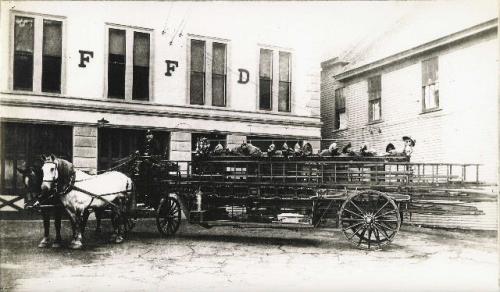
The main part of the building was divided into three stores on the ground floor. The upper floors (three stories) were offices and private apartments. Occupants were awakened quickly and exited by the stairs, although some had to be rescued over ladders, while others were rescued by firemen entering the building.
The fire started in one of the stores and spread rapidly, horizontally as well as vertically. The large wooden annex was now heavily involved, burning fiercely. Ten 2 ½ inch hose lines were in use at this time from mill yards as well as city hydrants.
The fire took three hours to bring under control, having gutted the entire building. Loss would be estimated at $51,000.00.
Water Department records showed that 493,000 gallons of water was used to extinguish this fire.
Horses for pulling fire apparatus had been supplied by the paper mills but finally the mills decided they could no longer continue the policy.
City horses had to be used. However, these horses were kept in the city stable on Bow Street. The fire house was on Central Street away from the horses. When the alarm sounded, firemen had to locate the city workers and return to the fire house to hitch horses to the apparatus.
Eventually, the fire house on Central Street was moved to Bow Street and connected to city stables. At night, the horses were now available, but during the day, the absent horses were still a problem.
On Sunday, December 7, 1902 at 8:30 am, fire was discovered in the Congregational Church on South Main Street. It would be the most serious fire since the Burleigh Block of 1900.
The members of Hose Company across the street were soon on the scene. The alarm was sounded but the whistle would not sound because there was no steam on at the paper mill.
A second alarm was run in, calling the steamer but it was one hour and 35 minutes before it arrived, drawn by city horses.
The paper mill horses were supposed to draw the steamer, but it was claimed that the alarm was not heard and it was necessary to hunt up the city horses and a driver.
The fire started near the furnace and spread rapidly and in a short time had reached the upper part of the building. Soon the fire reached the steeple and now beyond the reach of hose streams.
The fire was under control at 4:36 pm, described by Daniel Webster Steamer record as a “perfect ruin”.
A new Seagraves Hook and Ladder Truck was purchased from C.N. Richardson for $2250. It was a two horse design. This apparatus was put into service in 1904.
Another serious fire broke out on July 29, 1908. It was in the property of Charles Prescott on the corner of Webster and Main Streets. Box 14 was sounded but the paper mill was shut down and that resulted in the inability to sound the whistle. (Again the problem of no steam.) With only church bell sounding, firemen did not arrive as soon as they would have if the whistle sounded.
The Ladder truck horses were working on Willow Hill and the driver did not hear the alarm. He was coming down Central Street when someone told him of the fire. Again, the problem of horses away from apparatus manifested itself.
The additional problem of “no steam for the whistle” soon would be solved, a problem that had hampered the Department many times before.
In August of 1908 it was voted by City Council to install a compressed air plant for operating the fire whistle, to cost $1400. Another positive step had been taken but not before more valuable property had been destroyed. This problem of “doing nothing until there is no alternative” seems to have existed from earliest times.
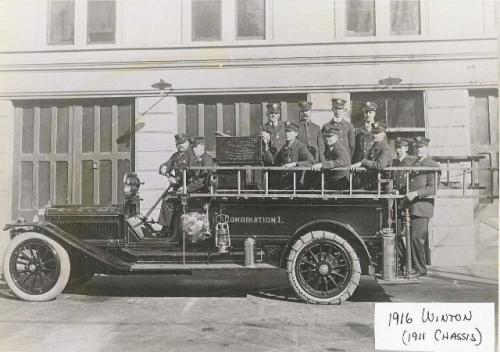
An alarm from Box 14, the corner of Main and Webster, was sounded on July 15, 1909 for a fire in the Boston Excelsior Company for one of the worst fires to hit in some time.
The fire started in some waste excelsior between piles of wood and spread immediately to wood. The poplar was dry as tinder and burned fiercely.
The fire burned form 2pm until brought under control at 4pm. Two thousand cords of wood were destroyed as well as a store house containing 100 tons of excelsior, which “burned like gunpowder”.
The steamer pumped two streams until midnight.
In 1910, City Council raised the salary of the Chief to $100 a year and 50 cents an hour for service at fires, reduced the number of assistant chiefs from four to two, raised their pay from $20.00 to $30.00 a year and f50 cents per hour for fires. Clerk’s salary was raised from $5.00 per year to $15.00 a year. Firemen would get $20.00 per year, 50 cents for the first hour and 35 cents for each hour thereafter, except for brush fires, where their pay would be 25 cents.
The Engineer of the steamer would receive $1.00 per hour for fires, 50 cents for drills and 35 cents for cleaning and repairing the engine.
The mechanical age arrived, finally, in 1912. B.M. Prescott Jr. presented a proposition to the City Council offering to furnish an auto truck, equipped with hose, extinguishers, axes and clothing for firemen. Cost would be $1100. for two years. He would also supply the drive.
Later in the year, the proposal was adopted and Prescott’s Garage built the hose and chemical wagon carrying eight pony extinguishers, 500 reel of 2 ½ inch hose, axes and other equipment. The truck went into operation on April 20, 1912.
The Sawyer Block, a three story brick building on Central Street was hit by fire on January 11, 1914. The blaze started in the cellar and raged for three hours before 17 lines of hose brought it under control.
The flames raced from the cellar, through stores on the street level, then into partitions to the third floor. The loss was over $30,000. Destroyed were: Sawyer’s Grocery, C.P. Stevens Hardware, offices and apartments.
On April 25, 1914, the Boston Excelsior Company was again hit by fire. Two large, two-story wooden buildings, all machinery and contents were completely destroyed.
In the buildings, 300 tons of excelsior was destroyed. Total loss was $30,000.
The firehouse on Central Street was to be moved to Bow Street, connected to city sheds, where more efficient use of the horses could be utilized. So in 1915, it was voted to do just that. The city stables would be moved back to allow room for the station. Walter Hill of Tilton would do the job for $800.00.
The steamer and hook and ladder were together where one man would be able to care for everything.
This was done to eliminate the problem of horses being away from fire apparatus, but during the day when city equipment made use of the horses, the problem still existed. This would only end with mechanical apparatus.
The absent horse problem was soon to end. In 1915, the Council voted to purchase a truck built on a 1911 six cylinder Winton Chassis. The truck would contain a 40 gallon chemical tank, 600 feet of hose, extension and roof ladders, 200 feet of chemical hose, lanterns, axes, crowbar and other equipment.
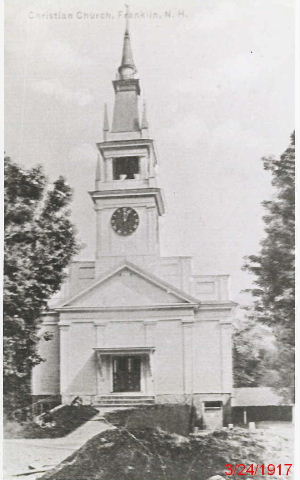
This piece would be the first city owned and maintained motorized apparatus. The truck would prove somewhat less than a complete success, but it was a new beginning.
The Christian Church on South Main Street was discovered on fire on March 24, 1917. Nothing was left standing except a big chimney and a small portion of the north wall.
Ray Benson of Benson Auto Company was awakened when light reflected into his bedroom window. At 3:10 am, he pulled in Box 16. The Department was quickly on the scene and Chief Colby sent in a second alarm calling out the Steamer Company, but the fire had made such headway it was impossible to enter the church building. The belfry withstood the fire for an unusually long time before it toppled over, landing spire down on the ground.
Loss was to exceed $20,000 with only $2,000 in insurance.
The expense of running the Winton truck was becoming critical, averaging $55.00 each time it responded to a call, $600.00 per year and an additional $350.00 to put it in good shape.
In 1918 Mr. Prescott presented, to the Council, a five year contract for $75.00 per month, for which he would furnish a high duty fire truck and driver to reach all parts of the city. This truck would carry the equipment on the Winton and that on the Seagraves Ladder Truck. This proposal was accepted and the Winton and Seagraves were done away with.
The Daniel Webster Steamer was called to East Andover on July 4, 1919. At this time, the steamer was pulled over the roads by auto. Old time firemen claimed that the steamer exploded at this fire, but based on available information, it is believed that hauling the steamer over rough roads dealt the final blow, splitting many of the seams. It was, at any rate, to have fought its last fire.
On December 26, 1919, the I.O.O.F. Block was struck by fire. The interior of the large three story brick building was completely ruined. A few minutes before 8 am, a clerk noticed smoke coming from the cellar. He checked the cellar and found heavy smoke and fire around the boiler. He sounded Box 25.
The Fire Department played water into the basement but could not confine the fire. It reached the partitions and spread quickly to the roof.
Nine streams were played on the fire, five from city hydrants, four from the mills.
Heavy damage was done to the second floor with partial collapse of the second and third floors. Damage was estimated at $80,000. This building would burn again in 1924.
In July of 1921, City Council voted to buy an American LaFrance. It would be a four cylinder 600 gallon pumper and cost $10,000. And so, after two years of discussion and debate, Franklin was to own its first fire pumper. It, as the Winton, would not fair well and be traded in 1925.
The truck arrived on March 13, 1922. It was a 75 H.P., Type 10, 4 cylinder with a type 39 pump.
The Daniel Webster Steamer Company would now become Engine Company No. 1.
Charles Brace was the city’s first full time driver. He would work 24 hours a day, six days a week, with the seventh day off. In addition to driving the LaFrance, he had to feed the city’s seven horses, and answer the phone. His pay – twenty-one dollars a week.
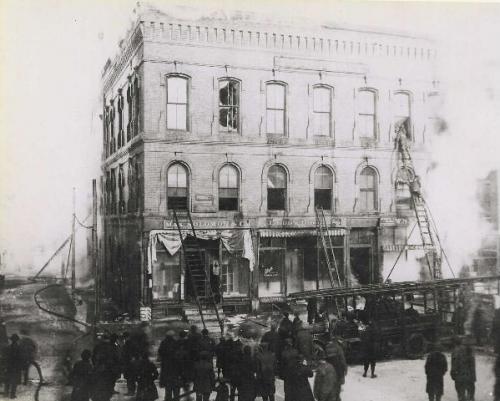
At 3:30 am on February 13, 1923, the city was awakened by the fire alarm from Box 114 at the buildings of the New Hampshire Orphan’s Home. It would prove to be disastrous for the local department. The following article was taken from the Journal Transcript:
“Snow was falling and the road was impassable for trucks. Equipment was loaded on sleighs and the firemen were taken over the road. A little later (about 5:40 am) four blows were sounded for more help. Assistance was also called from Concord, but the Concord Department aboard a special train, stopped in Penacook and turned back as Chief Colby and his men had the fire under control.”
“There were 61 children in the nursery building, all under seven years of age. All were saved and no injuries were reported.”
“Fireman Peter Savoie and his fellow firemen were playing a stream into the nursery and were about to put up a ladder against hew all when it collapsed without warning. Because of the deep snow, the men had no chance to run from the falling bricks and were buried beneath them. They were quickly dug out and were placed on cots of a baggage car on the 6am train to Franklin. A truck form Prescott’s Garage met the train at the depot and took the men to the hospital.”
“Peter Savoie was operated on but died soon after without regaining consciousness.”
“Five other firemen were injured. Arthur Wise had both legs broken. Ernest Murphy had a compound fracture of his left arm and a severe cut on his head. Three others were less inured”.
“Damage was $60,000.”
Again, as in 1919, fire would strike the I.O.O.F. Block. On March 25, 1924, fire started in a closet of the Elks Club on the second floor. The fire quickly shot up through the roof. Fire Apparatus was promptly on the scene and three streams of water from Franklin Mills were added to Department lines. A total of nine lines were played on the building.
The entire roof was burned away as were the stairs leading from the second floor to the third floor. Damage was $57,000.
Shortly after 9:00 AM on January 15, 1925, fire broke out in the Ford Service Station in the rear of Joseph Comire’s Building on Franklin Street.
Elliot and Courtemanche, owners of the garage said the fire seemed to start near the furnace, involving the ceiling, spreading so quickly the workers could not save their coats.
The garage was saturated with gasoline and oil which contributed to the rapid advance of the fire. The garage was destroyed in less than 30 minutes. It contained four new Ford cars, two Ford tractors and several Ford cars under repair.
Fire then spread to the Comire Block, occupied as a market. The sore used as a market and storehouse was also quickly destroyed. Damage was listed as $31,000.
The 1922 American LaFrance Truck was traded for a new truck from the same company. The additional cost for the new truck would be $3,500.00.
The new model was a 6 cylinder, standard rotary gear pump, had a 40 gallon booster tank with 200 feet of one inch booster line, a 750 gallon per minute pump, carried 1000 feet of 2 ½ inch hose, one roof ladder, one extension ladder, two 2 ½ gallon soda and acid extinguishers and 12 uniforms.
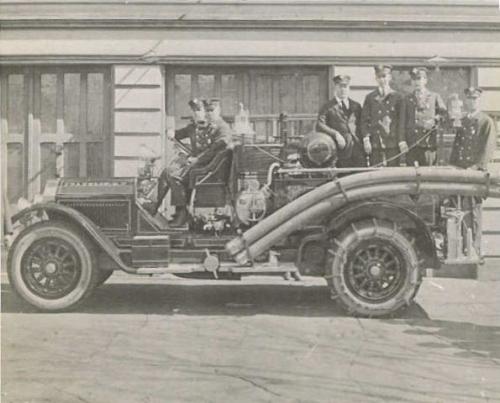
The truck was placed in service on July 1, 1925.
An old landmark on Central Street was discovered on fire, October 2, 1925. The Central Hotel, a four story wooden block was totally destroyed.
Two alarms were sounded from Box 25. The new LaFrance was on the scene immediately after the first alarm.
The fire started at 1:00 am, with the “all out” sounding 12 ½ hours later.
The flames broke out in the rear of the building and soon were shooting out the front. Water had to be applied from all sides.
Eight lines of hose were laid. Superintendent of the water works estimated that a quarter of a million gallons of water were used on the fire. Damage was $20,000.
This building had formerly been the P.L. Kenedy Saloon and Hotel.
A new Mack Hook and Ladder arrived on December 26, 1926. The cost of the new vehicle was $11,000. It carried 300 feet of ladders, 500 feet of hose and other necessary equipment. It had a pump of 600 gallons per minute. This truck along with the LaFrance and a new Chevrolet Hose Truck, gave the city excellent apparatus and better fire protection.
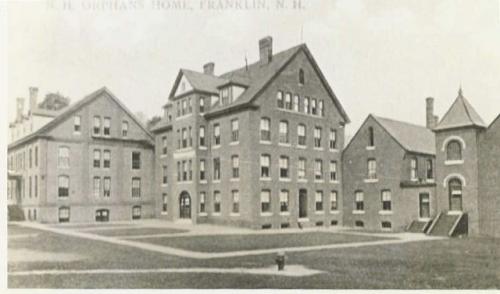
The most serious of Franklin’s fires to date was to occur on March 29, 1927. the following is an account of the fire.
The fire in the Syndicate block on Central Street resulted in the loss of three lives. The building was the principal business and office building in Franklin.
Smoke was seen coming through a transom by a tenant who had been in bed. Verbal alarms were given by occupants who had difficulty leaving the building because of heavy smoke and fire conditions.
Upon arrival of the Fire Department, many residents were rescued by firemen over ladders. At least one third floor occupant was saved one he jumped into the new life net.
The Department fought the fire with nine streams, including three lines from Franklin Mills System. A new high pressure pump at the mill, pumping water directly from the river was used for the first time.
The second and third floors were totally destroyed. Loss was estimated at $200,000. This did not compare to the loss of human lives.
Department was to see its first full time Fire Chief in 1933. Edgar Wheeler, a long time fireman had been appointed driver in 1929. He replaced Call Chief Harry Colby, who had served since 1908. Chief Colby had entered Engine Company No. 1 in 1883 and served a total of 49 years.
The Kimball Home, known as the Thousand Acre Farm, was destroyed by fire on March 30, 1934. The homestead had been built 125 years previous, and had 20 rooms.
Donald Kimball drove to the Orphan’s Home and pulled Box 19.
The LaFrance pumped from a brook but mud and dirt was drawn into the pump and handicapped the firemen. Three lengths of hose, in the 2000 foot lay, burst adding to a serious delay.
The house held many antiques and valuable furniture. All were lost at a cost of $20,000. The building would be rebuilt but be struck by fire in the future.
The year 1934 was to see another milestone reached by the Department, the establishment of the first Rescue Squad in the State of New Hampshire.
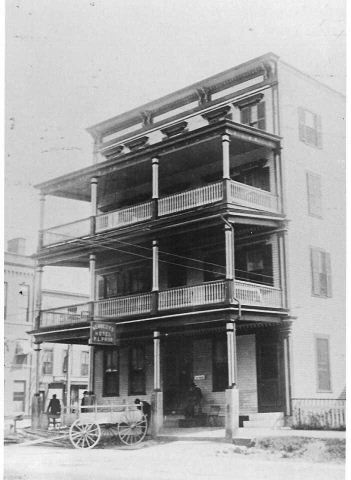
A Lincoln 1926 truck, purchased by the Association of Firefighters, was to run primarily as a first aid unit to protect Franklin Firefighters.
The Lincoln could run its own generator for flood lights. It carried two pure air helmets with 150 feet of hose on each of two reels, and inhalator with oxygen, first aid kits, folding stretcher, blankets, ropes and rescue tools.
The Rescue Squad was organized with two men from the Hook and Ladder Company, one man from Hose Company and four men from Engine Company No. 1.
The first record of the Squad work was on July 21, 1934, for a fire on Oak Hill in Northfield, where they gave first aid to nine people.
On May 14, 1949, the Lincoln would be involved in an accident on the way to Salisbury. One of the wooden wheels broke causing the truck to roll over. The responding squad members were slightly injured.
Paper Mill B of the International Paper Company was badly damaged by fire on Saturday, January 5, 1935. The fire started in the beater room and spread rapidly. Smoke soon was pouring from every window in the mill.
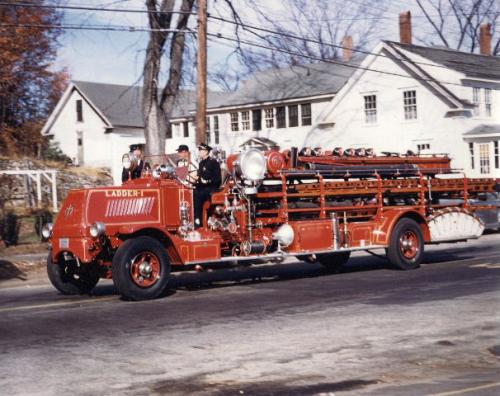
The Department soon had eight streams of water with more streams supplied by Franklin Mills.
Several firemen escaped injury when portions of the walls fell. Two sections of wall fell, probably due to explosions.
The Mill had been closed and all machinery was being removed by a Manchester Junk Dealer. The workers, because of the cold had started fires in barrels to keep warm. They were also using acetylene torches to cut pipes but the cause of the fire is not known.
The Superintendent of the Franklin Water Department estimated that between 500,000 and 600,000 gallons of water was used. Loss was $25,000.
The Mrs. E.S. Edmunds barn was discovered on fire, September 20, 1935. Dir. Arthur Edmunds ran a veterinary hospital at this location.
The fire was discovered in the hay spreading rapidly. A family horse was rescued but ran back into the barn and was lost.
Dr. Edmunds lost his hospital and all the equipment and supplies.
The barn was 80 feet long, 45 feet wide and contained 35 tons of hay. The fire was visible from all parts of the community. Loss was $15,000. The house was saved.
Chief Wheeler and Charles Cunningham built and installed a light plant on the Mack Ladder Truck. It consisted of one 1500 watt floodlight, one 1000 watt light and two 250 watt portable lights. This was accomplished after the Chief had connected representatives of the Mack Truck Company who informed the Chief that such a thing could not be done.
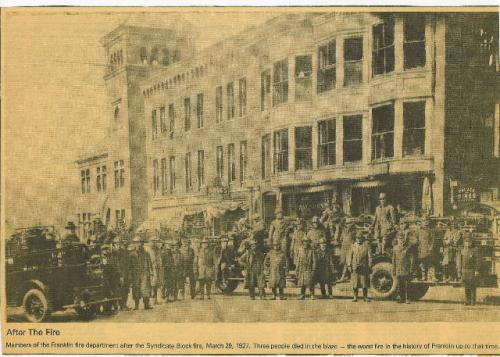
After the job was completed, Chief Wheeler called the Mack people and told them they could see the results of what he and Charley had done. They came, they saw and admitted that the two men had done what their engineers said could not be done.
In 1941, the Chevrolet Truck was falling apart, so Council voted to replace it with a Federal 500 gallon pumper. Cost of the new truck was $4,572.00. It carried 1200 feet of 2 ½ inch hose, one foam and one soda and acid extinguishers, one 24 foot roof ladder, six lengths of 4 inch suction hose, 100 gallon booster tank, 150 feet of ¾ inch booster line and other equipment.

